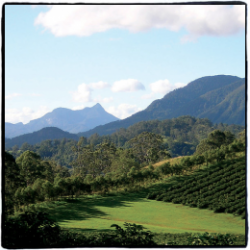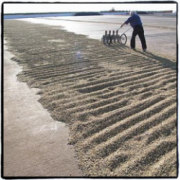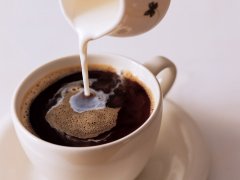Introduction to Australian boutique coffee
Coffee cultivation in Australia began in 1880. In 1926, because of poor quality, many coffee farmers gave up coffee cultivation because it was unprofitable. It was not until the early 1980s that the Australian coffee industry revived because of the rise of Queensland coffee popularity.
Australian boutique cultivation ranges from Nimbin and Lismore in New South Wales to Cape York in Queensland. Australia's large coffee plantations, generally located on the Atherton Plateau, adopt a fully automated planting model, while small plantations tend to use traditional artificial planting patterns.
When the coffee industry began to revive in Australia in the 1980s, although the quality and popularity of Australian coffee had been greatly improved, the output of both local and imported varieties in Australia was disappointing. Today, most of Australia's coffee is for its own market, with a small proportion of exports. Although the Australian authorities' Department of basic Industries (QDPI) has never stopped improving the disadvantage of low domestic coffee production capacity, the continuous introduction of foreign coffee varieties has damaged the characteristic quality of Australian coffee to a certain extent.
In the past 10 years, Australian coffee began to appear frequently in the boutique coffee competition between Europe and the United States, and achieved good results, which also greatly improved the reputation and development of Australian coffee. The vigorous development of the global boutique coffee market in recent years has also provided a broad overseas market for Australian coffee. These factors do make Australian coffee get rid of nearly a century of silence and slowly revive.

XF, Peak Village, Australia
Producing country: Australia
Grade: XF
Planting area: new South Wales
Label: Peak Village
Treatment method: dry processing
Appearance: 6ddeband 300grgamma SCR17-18
Variety: bourbon
Note: the Peak Village is located in Ningbin, New South Wales, Australia, with a subtropical climate. The planting area itself is an extinct volcano, with an altitude of more than 1400 meters and unique volcanic red soil. The plantation is completely replaced by machinery. Its quality is somewhat similar to the floral aroma of lovely island coffee, and has the bright honey taste of high-end Brazilian coffee, and strong sweet taste. Coffee has a high consistency.
Dry aroma (1-5) 3
Wet aroma (1-5) 3
Acidity (brightness) (1-10) 8.3
Taste (layered) (1-10) 8.6
Taste (Alcohol thickness) (1-5) 3.8
Aftertaste (residue) (1-10) 8.4
Balance (1-5) 1
Basic score (50) 50
Total score (maximum 100) 86.1
Strength / main properties: soft / honey flavor, high consistency
Recommended baking degree: fullcity
Contrast: the sweetness of Brazilian coffee and the floral aroma of "island coffee".
Important Notice :
前街咖啡 FrontStreet Coffee has moved to new addredd:
FrontStreet Coffee Address: 315,Donghua East Road,GuangZhou
Tel:020 38364473
- Prev

Introduction of Brazilian boutique coffee
Brazil is the largest producer of Arabica coffee as well as robusta coffee and is the number one coffee producer in the world.
- Next

How to distinguish the quality of ESPRESSO
When you enjoy a cup of coffee packaged by various cultures in a cafe for tens of yuan, have you ever thought about and learned to identify whether you are drinking a perfect cup of coffee?
Related
- Beginners will see the "Coffee pull flower" guide!
- What is the difference between ice blog purified milk and ordinary milk coffee?
- Why is the Philippines the largest producer of crops in Liberia?
- For coffee extraction, should the fine powder be retained?
- How does extracted espresso fill pressed powder? How much strength does it take to press the powder?
- How to make jasmine cold extract coffee? Is the jasmine + latte good?
- Will this little toy really make the coffee taste better? How does Lily Drip affect coffee extraction?
- Will the action of slapping the filter cup also affect coffee extraction?
- What's the difference between powder-to-water ratio and powder-to-liquid ratio?
- What is the Ethiopian local species? What does it have to do with Heirloom native species?

